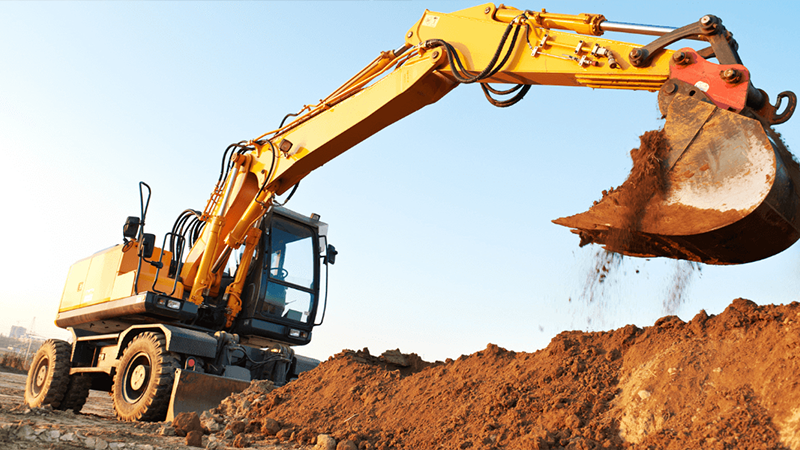Excavation Soil Removal: What Happens to the Dirt, and Why It Matters

Excavation soil removal might not get the spotlight, but it plays a big role in how smoothly a construction project runs. Every bucket of soil carries decisions—reuse it, treat it, or haul it away. Get it wrong, and costs climb fast.
From handling clean fill to dealing with contaminated soil, there’s a lot more going on beneath the surface. At RockZone Americas, we’ve seen how the right tools and approach can make all the difference.
Want to know what really happens to that massive pile of dirt and what it means for your bottom line? Keep reading.
Key Takeaways
- Managing excavated soil correctly saves time, reduces risk, and keeps your project on track.
- Contaminated soil needs proper testing and treatment to protect groundwater and nearby structures.
- The right equipment makes excavation, treatment, and reuse faster, safer, and more cost-effective.
What Is Excavation Soil Removal?
Excavation soil removal refers to the process of digging and removing soil and other materials from a site to prepare for construction. It’s one of the first steps performed on nearly every development project and lays the groundwork for everything that follows.
This step clears space for foundations, utilities, structures, and landscaping. It also helps identify the condition of each soil layer, from surface topsoil to deeper materials like clay, rock, or contaminated media.
What gets removed depends on the site:
- Top layer with organic material and plant roots
- Soil mixed with rock, gravel, or debris
- Contaminated soil containing industrial pollutants or chemicals
Getting this process right affects both immediate construction outcomes and long-term project performance.
Where Does All the Excavated Soil Go?
After digging, the soil doesn’t just sit there. It must be managed, sorted, and moved depending on its type, quality, and condition. Most construction sites begin by stockpiling soil temporarily on-site.
From there, the material may:
- Be reused for backfill, leveling, or landscaping
- Get transported to another development site
- Require disposal if it contains contaminants
Keep in mind, once soil is excavated, it expands. This phenomenon, known as swell, increases its volume, making it harder to store and transport.
Logistics also matter. Large volumes of excavated soil, limited space, and strict regulations mean removal has to be carefully planned to avoid unnecessary delays and costs.
Reusing Excavated Soil: Smart, Sustainable, and Cost-Effective
Clean soil that is free from debris and contamination is one of the most valuable resources on a job site. Reusing it reduces hauling, lowers landfill use, and supports a cleaner environmental footprint.
It can be repurposed for:
- Filling trenches and foundations
- Creating embankments or adjusting site grades
- Serving as a compacted base under pavement or sod
Soil mixed with sand, gravel, or crushed stone can strengthen structural layers or support utilities. When screened and compacted, it often replaces the need to bring in new material.
By making use of what has already been excavated, developers reduce disposal costs and limit the environmental impact of large projects.
What If the Excavated Soil Is Contaminated?
Not all soil can be reused. Some materials are classified as contaminated media due to the presence of chemicals, petroleum products, or heavy metals. These often come from former industrial use, leaking underground tanks, or improper waste handling.
On contaminated sites, this type of soil poses risks to workers, surrounding properties, and the environment. If contaminants reach groundwater or spread via rainwater runoff, the damage can be long-lasting and expensive.
That’s why identifying contamination is a critical part of early site evaluation. It determines whether the soil can be reused, treated, or needs to be hauled off-site for disposal.
Testing, Treating, and Removing Contaminated Soil
The first step in managing contaminated soil is confirming its condition through lab testing and field assessments. Samples are collected from each soil layer and analyzed for chemical concentrations, pH levels, and physical properties.
Once identified, the soil may be treated on-site using methods like:
- Chemical stabilization to neutralize pollutants
- Thermal treatment for volatile compounds
- Soil mixing, which blends amendments into the soil for safe reuse
If treatment isn’t possible on-site, the soil is loaded and transported to approved disposal facilities, with full documentation to maintain compliance. This option is more expensive but necessary for certain materials that pose a risk to public health or the environment.
Preventing Soil Erosion During and After Excavation
Once soil is disturbed, it becomes more vulnerable to erosion, especially from rainwater. Left unmanaged, erosion can cause serious problems—polluted runoff, unstable foundations, and sediment buildup in drainage systems.
To control soil erosion, contractors often:
- Cover exposed piles with tarps or geotextiles
- Use silt fences and erosion control blankets
- Adjust site grading to control runoff patterns
Erosion control also supports environmental regulations and helps protect nearby properties. It’s not just about keeping soil in place. It’s about keeping your project safe and compliant.
Excavation Soil Removal Regulations You Can’t Ignore

Soil removal isn’t just a physical task. It’s a regulated process with clear rules around disposal, treatment, and site restoration. Agencies like the EPA and OSHA set standards that must be followed throughout every stage of excavation.
Contractors are responsible for:
- Obtaining proper permits before removal begins
- Testing and documenting contaminated materials
- Managing discharge from dewatering systems
- Providing records for soil transport and landfill approvals
Working with trained professionals helps you stay aligned with federal, state, and local requirements. It also prevents costly rework or project delays due to compliance violations.
The Hidden Costs of Transporting Excavated Soil
Moving soil isn’t as straightforward as it seems. Transporting excavated soil off-site adds layers of cost, especially when dealing with contaminated soil.
Expenses can include:
- Fuel and labor for hauling
- Equipment rental and truck access
- Permit fees for regulated materials
- Load limitations based on the soil type
Soils with higher moisture or large rock content weigh more and take up more space, increasing the number of trips needed. This is why planning ahead and reducing what needs to be moved can save time and money.
Powerful Tools for Smarter Soil Removal
Handling excavation soil removal takes more than a shovel and a truck. It takes the right equipment to manage soil, debris, and contaminants efficiently on busy sites.
RockZone Americas provides job-tested tools built for construction, mining, and environmental remediation. Our products are designed to cut project time, reduce waste, and support effective on-site treatment and reuse.
Here’s how we help:
- Rockcrushers turn concrete and rock into usable backfill
- Soil Mixers stabilize contaminated soil directly on the ground
- Rockscreeners sort large volumes fast with XXL hopper capacity
- Rockwheels cut through tough materials with precision and low vibration
Need gear for trenching, dredging, infrastructure, or contaminated land? We offer a full line of cutting and mixing attachments for purchase or rental.
Get in touch to find the right tools for your next project.
Conclusion
Excavation soil removal impacts more than just the ground—it affects safety, compliance, costs, and the overall success of a project. Contaminants, if present, must be identified and treated correctly to avoid long-term issues with groundwater or nearby structures.
With the right tools and a clear process, soil can be managed, reused, or disposed of effectively. From topsoil to deeper layers, getting this part right keeps the entire site on track.
Frequently Asked Questions
How do you remove excavated soil?
Soil is removed using excavators and haul trucks. After digging, it’s sorted based on contamination, condition, and reusability.
Clean soil is often reused for backfill or grading. Contaminated soil may require testing, treatment, or off-site disposal. Dewatering may also be needed if groundwater is present.
What is the soil removed from an excavation called?
It’s commonly called excavated soil or spoil. Depending on the site, it may include topsoil, clay, rock, or contaminated materials. Clean spoil can be reused. Soil with contaminants must be tested and managed before reuse or disposal.
What is the process of soil excavation?
Soil excavation involves digging, removing, and sorting soil to prepare a site. The process includes assessing conditions, removing the top layer, handling discharge, managing contamination, and preparing the ground for buildings or infrastructure.
The goal is to complete the task safely and effectively.
What happens if contaminated media is found during excavation?
When contaminated media is found, the soil must be tested to identify the type and level of contaminants. If high concentrations are confirmed, the soil is either treated on-site or transported to an approved disposal facility.
Proper handling protects groundwater, nearby structures, and the environment. This step is critical to keep the project in compliance and avoid costly delays.
Why is soil excavation important in construction?
Soil excavation creates a safe, stable base for buildings, utilities, and infrastructure. It clears unsuitable material, exposes the right soil layer, and helps prepare the ground for the next phase.
This task is often performed early in the process and is key to avoiding future issues with settling, drainage, or contamination.
